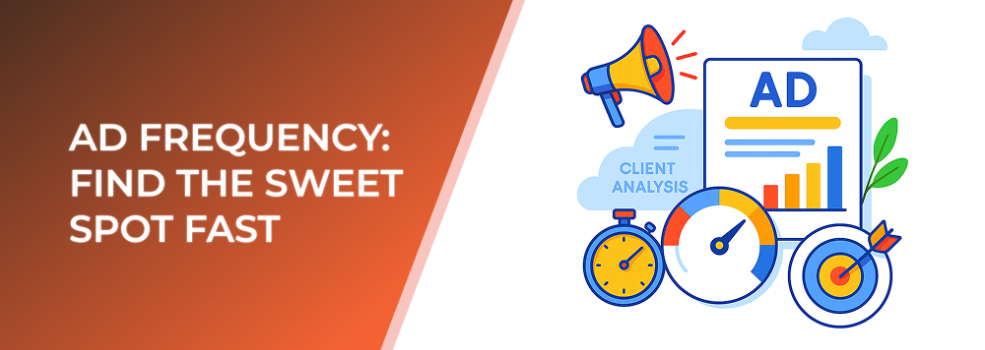Ad frequency—the number of times a single user sees your ad—directly influences performance. Too low, and your message doesn’t land. Too high, and your audience becomes annoyed, costs rise, and results drop.
According to industry benchmarks, ad fatigue typically starts appearing once frequency reaches 6–10 impressions per week. Campaigns that exceed this range often experience rising CPMs and declining CTRs.
The Performance Patterns Behind Frequency
1. CTR Declines as Frequency Increases
Research shows that click‑through rate can drop by 20–40% once frequency surpasses 5 impressions per user. This is often the first clear sign of saturation.
2. CPM and CPC Usually Rise
As users stop engaging, platforms increase costs to continue delivering the ad. Studies indicate that CPM can rise by 30%+ when frequency climbs above 8.
3. Conversions Peak Early
Performance data across multiple industries shows that conversions typically peak between frequency levels of 3–5. Beyond that, cost per conversion often increases steadily.
How to Determine Your Ideal Frequency Quickly
1. Track Performance Curves Weekly
Monitor CTR, CPM, and conversions as frequency increases. The ideal range is where conversions remain stable and costs do not spike.
2. Segment by Audience Type
Warm audiences often tolerate higher frequency than cold audiences. Retargeting can sometimes perform best at 6–10, while cold outreach should generally stay around 3–5.
3. Compare Creative Variants
If frequency increases but performance remains stable, the creative is strong. When performance drops sharply at lower frequencies, creative refresh is needed.
4. Use Time-Based Frequency Windows
Instead of tracking lifetime frequency, measure frequency over 7‑day or 14‑day windows. This makes saturation patterns far easier to spot.
Signals It's Time to Refresh Creatives
-
CTR drops more than 25% compared to the campaign start
-
CPM rises consistently for 5–7 days
-
Conversion volume drops by 15–30%
-
Frequency exceeds 7–9 and performance weakens
If two or more of these conditions are met, it's time to rotate creatives or reduce budget.
Strategies to Control Frequency Without Losing Results
1. Expand Targeting Segments
Reaching fresh users helps slow saturation and keep frequency in a healthy range.
2. Introduce Creative Variations
Rotating different visuals or angles reduces fatigue. Even minor changes can reset engagement.
3. Use Automated Rules
Set rules to pause ads when frequency exceeds a threshold or when CTR drops below your baseline.
4. Adjust Placement Mix
Some placements saturate faster. Expanding to more placements can balance frequency and reduce costs.
Quick Guide: Recommended Frequency Ranges
-
Cold audiences: 3–5
-
Warm audiences: 5–10
-
Retargeting: 6–12
-
Brand awareness: Up to 10+ is acceptable if costs remain stable
These ranges are guidelines—your campaign data should always guide final decisions.Final Thoughts
Finding your ad frequency sweet spot is about reading the signals early. Regular monitoring reveals exactly when performance dips and when audiences have seen enough. With consistent testing, you can maintain healthy costs while maximizing impact.
Suggested Articles
Here are three additional articles you may find helpful:

